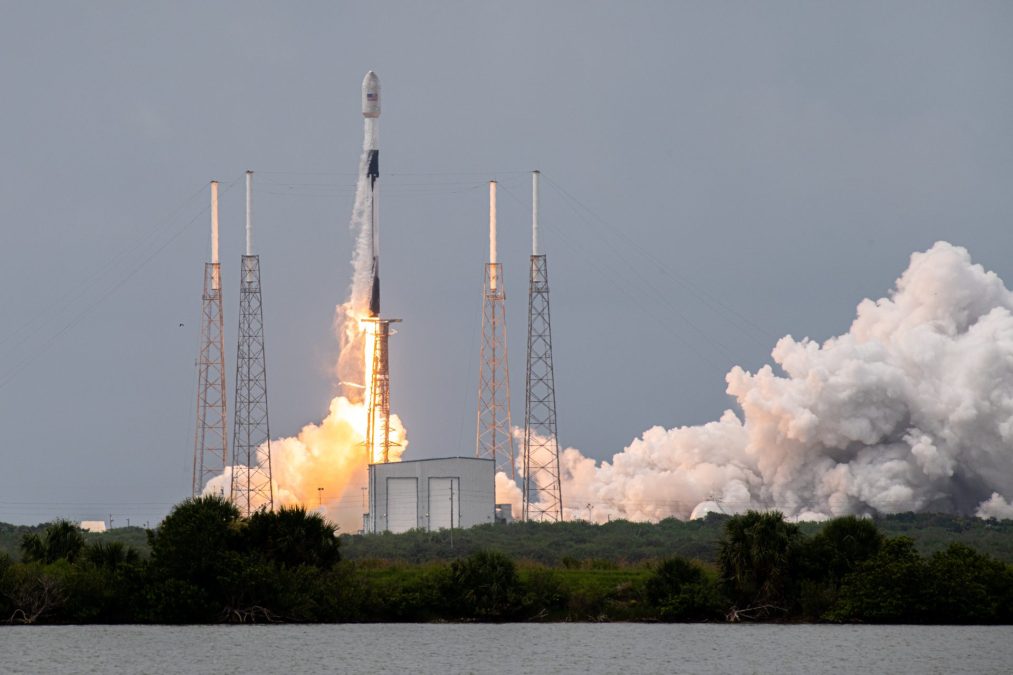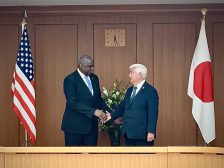Cyber Command’s force is growing, in part, to support space

As part of investments in the Future Years Defense Program, U.S. Cyber Command and its subordinate organizations are investing in a phased approach to contribute defensive and offensive teams to support space entities.
Part of the growth of Cyber Command’s cyber mission force, in addition to the increased demand in cyberspace, is to support newly established space entities such as Space Command, the newest combatant command.
“We continue to contribute to the persistent defense of U.S. space-based assets and capabilities with a dedicated Cyber Protection Force (CPF) team; however we are adding to that capability in the Future Years Defense Program (FYDP),” an Air Force spokesperson said. The Future Years Defense Program is a five-year budget projection of the DOD’s costs for a current fiscal year and the four years following.
16th Air Force/Air Forces Cyber is responsible for supporting Space Command through what’s known as Joint Force Headquarters-Cyber. The various Joint Force Headquarters-Cyber branches provide planning, targeting, intelligence and cyber capabilities to the combatant commands to which they’re assigned. The heads of the four service cyber components also lead their respective JFHQ-C and oversee the cyber teams that conduct operations for the combatant commands.
As part of the phased approach, the FYDP contains investments for defensive cyber protection teams, combat mission teams — the teams that conduct cyber operations on behalf of combatant commands mostly in the offensive sphere — and cyber support teams, which provide intelligence, mission planning and other necessary support work for combat mission teams, the spokesperson said. This phased approach will take place over the next two years.
In addition, they have already met initial staffing levels for a cyber operations-integrated planning element for Space Command and are well on their way toward initial operating capability.
These entities were created as a means of better integrating cyber operations into the overall planning process. Cyber planners, not actual operators, are physically embedded within various staff sections at the combatant commands to provide expertise on how cyber can be incorporated into their operations.
In last year’s budget request, the Department of Defense sought to add 14 additional cyber mission force teams through 2024. This year’s request seeks to grow the cyber mission force by five additional teams. In Fiscal 2022, there were four teams added with five added in fiscal 23, a Cyber Command spokesperson said. The Army and Air Force will resource those teams.
“I will tell you that we did see an increase in those 133 teams, that’s already been approved. The build out starts in 22, so this year, and it extends through 24, specifically to help us focus in on the stand up of the next combatant command, which is the U.S. Space Command and also focus in again, on our two primary concerns, strategic concerns, which would be China and Russia,” Lt. Gen. Charles Moore, deputy commander of Cyber Command, said at the command’s legal conference on March 10.
While the Air Force declined to offer specifics regarding what new tactics defending space assets requires for teams, it did say that as in any new operational environment, personnel need to train and establish situational awareness by honing their knowledge of unique systems and technologies in that arena.
“In order to support USSPACECOM, our Cyber Protection Force will establish necessary command and control links and planning relationships through JFHQ-C Air Force. Additionally, the force will work with USSPACECOM to understand their priorities for defense,” the Air Force spokesperson said. “The systems that USSPACECOM depends upon to perform its mission have existed before this newest combatant command was created. Therefore, the knowledge necessary to defend these systems will further enable the forces that will protect them.”
To continue to support Space Command, in the short term, the Air Force has adjusted its current protection forces to cover Space Command priorities. Over the next two years, cyber protection forces will be added to the cyber mission forces to support Space Command as needed.
In fact, a team from the 837th Cyberspace Operations Squadron that was supporting Transportation Command has already transitioned to support Space Command.
As for the other new space entity within DoD — Space Force — its cyber personnel, sourced from the Air Force, are focused on Space Force-specific cybersecurity. It is unknown at this time if Space Force will contribute any members to the cyber mission force that feeds up to Cyber Command, the Air Force spokesperson said.
The spokesperson did note that there will be collaborative relationships with Cyber Command components based upon organizational structures and functions in Space Force.






